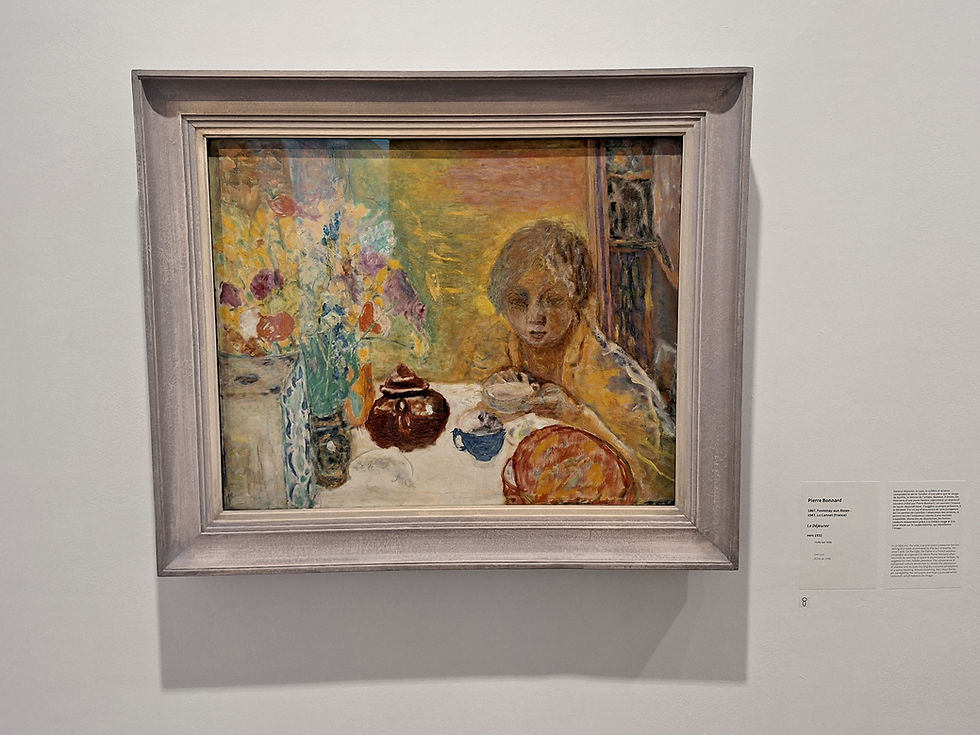Pierre Bonnard: The Whisper of Color and Memory
- Koöko Fleurs
- Sep 5
- 2 min read
Updated: Sep 28


There are moments in museums when time folds in on itself. I had one of those moments recently at the Musée d’Art Moderne de Paris, standing before Pierre Bonnard’s Le Déjeuner. A child seated at a table, surrounded by the quiet clutter of domestic life—a teapot, a vase of flowers, a plate half-touched. The colors hum softly, like a memory you didn’t know you had. I bought the postcard immediately. It felt like a piece of home.
Bonnard doesn’t shout. He murmurs. His paintings are not declarations but recollections—fragments of light, texture, and emotion stitched together from memory. He rarely painted directly from life. Instead, he observed, sketched, and later summoned the scene in his studio, letting time soften the edges. The result is a kind of visual poetry: interiors bathed in golden light, figures half-present, and colors that seem to breathe.
Born in 1867 in Fontenay-aux-Roses, Bonnard began his career studying law, but the pull of art proved stronger. He became one of the founding members of Les Nabis, a group of young artists who saw painting as a spiritual act. Influenced by Gauguin and Japanese prints, Bonnard developed a style that was intimate, decorative, and deeply personal.
His wife, Marthe, appears in countless works—often bathing, often alone. But Bonnard’s gaze is never voyeuristic. It’s tender, almost reverent. He paints her not as subject, but as presence. In Le Déjeuner, the child is similarly rendered—not posed, but simply existing. The table is not staged; it’s lived-in. The flowers are not symbolic; they’re just there, blooming quietly.
What moves me most about Bonnard is his devotion to color. He would return to canvases years later, just to add a new shade he’d discovered. For him, color was not decoration—it was emotion. It was memory. It was the thing that made the ordinary extraordinary.
In a world that often demands spectacle, Bonnard offers stillness. His paintings remind us that beauty lives in the unnoticed: the curve of a cup, the slant of afternoon light, the hush of a room where someone once sat.
Visiting the Musée d’Art Moderne de Paris was more than just an afternoon of admiration—it was a quiet encounter with the soul of Pierre Bonnard. His paintings don’t demand attention; they invite contemplation. Le Déjeuner stayed with me long after I left the gallery, tucked into my bag as a postcard, now resting on my desk like a gentle reminder: beauty often lives in the smallest moments.
In a city that pulses with grandeur, Bonnard’s work whispers. And sometimes, it’s the whisper that lingers longest.











Comments